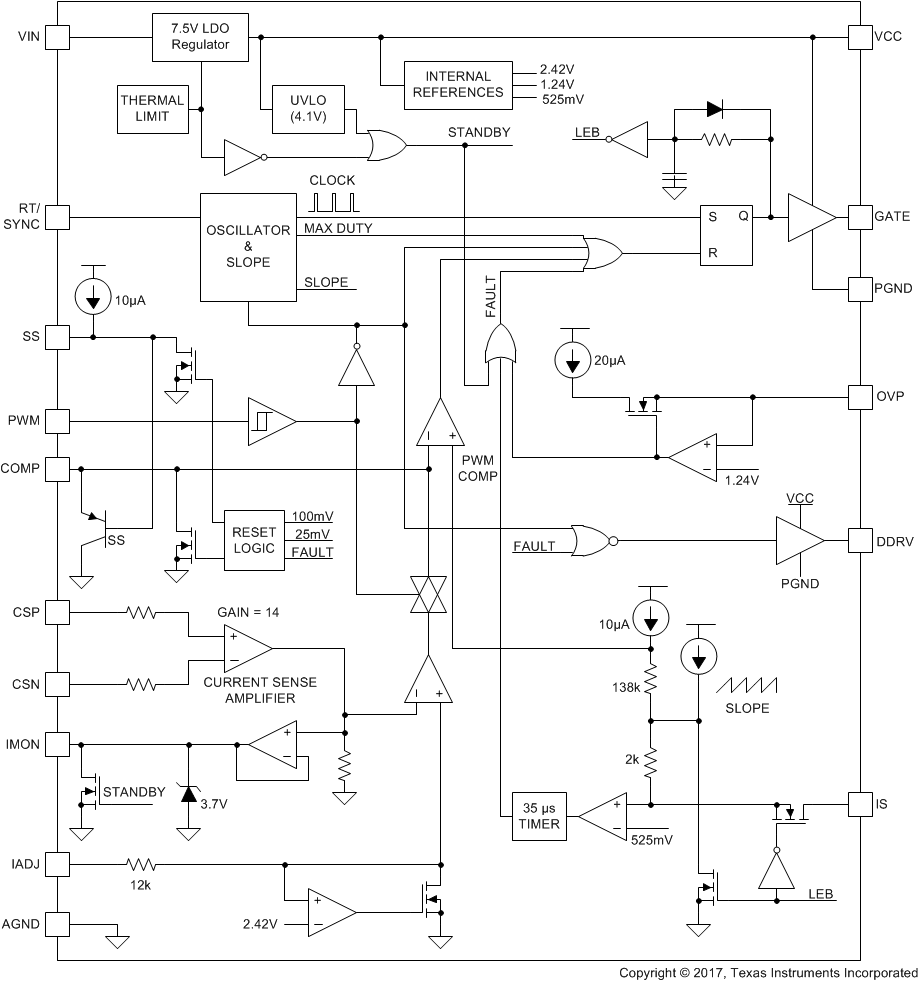TIDUCL3 February 2017
- 1 Overview
- 2 Resources
- 3 Features
- 4 Applications
- 5 Design Images
- 6 System Overview
-
7 System Design Theory
- 7.1 PCB and Form Factor
- 7.2 Optimizing Board Performance Based on LED String Voltage and Current
- 7.3 Switching Frequency
- 7.4 Output Overvoltage Protection (OVP)
- 7.5 Current Monitoring (IMON)
- 7.6 Thermal Foldback
- 7.7 Clock Generation (PWM)
- 7.8 Onboard Supply and Setting Duty Cycle
- 7.9 Buffering, Averaging, and Filtering
- 7.10 Boost Converter
- 8 Getting Started Hardware
- 9 Testing and Results
- 10Design Files
- 11Related Documentation
- 12About the Author
6.4.5 TPS92691-Q1
The TPS92691-Q1 is a versatile LED controller that can support a range of step-up or step-down driver topologies (see Figure 6). The device implements a fixed-frequency, peak-current-mode control technique with programmable switching frequency, slope compensation, and soft-start timing. The device incorporates a high-voltage (65-V) rail-to-rail current sense amplifier that can directly measure LED current using either a high-side or a low-side series sense resistor. The amplifier is designed to achieve low input offset voltage and attain better than ±3% LED current accuracy over a junction temperature range of 25°C to 140°C and output common-mode voltage range of 0 to 60 V.
LED current can be independently modulated using either analog or PWM dimming techniques. A linear analog dimming response with a 15:1 range is obtainable by varying the voltage from 140 mV to 2.25 V across the high impedance analog adjust (IADJ) input. PWM dimming of LED current can be achieved by modulating the PWM input pin with the desired duty cycle and frequency. Use the DDRV gate driver output to enable series FET dimming functionality to obtain over a 1000:1 contrast ratio.
The TPS92691-Q1 supports continuous LED status check through the current monitor (IMON) output. This feature allows for LED short circuit or open circuit detection and protection. Additional fault protection features include VCC UVLO, output OVP, switch cycle-by-cycle current limit, and thermal protection.
 Figure 6. TPS92691-Q1 Functional Block Diagram
Figure 6. TPS92691-Q1 Functional Block Diagram